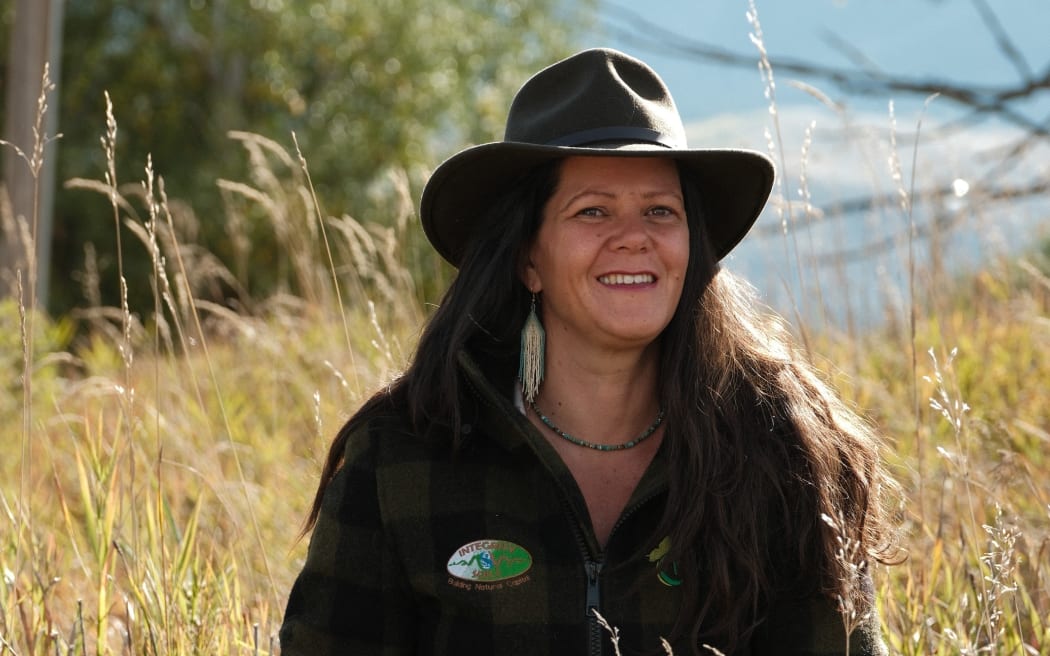Understanding what makes soil thrive can dramatically reduce the need for fertiliser on farms, says NZ-born soil expert Nicole Masters.
"There's this real big push in New Zealand to say 'this isn't possible' ... [but] you can run a high-output dairy production system without all the inputs," she tells Afternoons.

Photo: Supplied
Since graduating from Otago University in the '90s, Nicole Masters has become one of the world’s top agro-ecologists and now lives in the US state of Montana.
She is currently back in Aotearoa sharing her knowledge at soil health workshops. This Sunday, she'll speak at an event in Auckland called Road To Regeneration.
Masters tells Afternoons she first visited Montana back in 2013 and just never left.
“I was invited to speak at an event and it was like 600 cowboys. I was like 'Are you people for real?' And I never had to advertise again.
“It just seemed like there's been such a huge interest in my work, which is far more than just soil. It's really how do we connect all the dots for ecosystem function and well-being of farming or ranching enterprises.”
Agro-ecologists look at food production systems through an ecological lens, Masters says.
“How do we work with nature in order to have microbiology do the work for us, so that we're not having to put a whole lot of inputs into the system?
“We really encourage biodiversity. When we have a system that works like that, we get more efficient at capturing free sunlight energy, then we don't need to be spending the same amount of money.”
Farmers who follow this approach are, on average, 80 percent more profitable, she says, yet New Zealand remains one of the world’s biggest consumers of fertiliser.
“If we look at it, farmers are not any more spectacularly profitable than they were before 2001 when the big dairy boom came in.
“So I think farmers themselves are a little bit [thinking that] the system works against them in terms of keeping inputs going on.”
Masters has worked with New Zealand farmers who've reduced their fertiliser inputs down to less than 10 percent of the average.
“Yet people will tell them 'you can't do that'. There's this real big push in New Zealand to say 'this isn't possible' and my call is to get interested in the outliers, get interested in people that are doing things that don't seem possible, because you can run a high output dairy production system without all the inputs.”
A high-input approach damages the soil’s structure, she says.
"I often talk about soil as being like the human gut system - you have a whole digestive system and that is your microbiology.
“So if we are feeding that system a lot of synthetic inputs then it changes that microbiome, it changes the types of microbiology in there that then require a system that is putting on nitrogen, for instance, or putting on phosphorus.”
High nitrogen use "collapses” the structure of soil, Masters says.
“We end up with soils that don't breathe, they're not very well aggregated.
“Just like you and I, our number one factor that we need to live is air, we need to be able to breathe, it's the same with soil. If soils aren't able to breathe well, all these systems start to collapse.”
This manifests as a lack of soil resilience, she says.
“Within a couple of weeks, New Zealand soils can be drying up if it hasn't rained or we see flooding events or we see these compacted soils require 10 times the amount of nitrogen to get their same response as a soil that wasn't compacted.
“It's this vicious cycle because you're putting on nitrogen to grow grass. And then that means you need more nitrogen, so it puts farmers on a treadmill.”
Feeding the soil's microbiology through diversity is a better approach, she believes.
“Am I empowering the underground workforce to do that work, to kick in that natural nitrogen cycle, to release bound phosphorus?”
“And that might be diversity of plants, diversity of biological foods as such, and then start to see the soils loosen up become more aggregated.
“Then your nitrogen cycle starts to work, but also your water cycle starts to work.”
In her workshops, Masters aims to foster in participants a deeper understanding of what is going on within soil structures.
“Not only from a mineral perspective but microbiology, organic matter. What are plants trying to tell you? Being able to read plant indicators is so powerful.
“I think a lot of people would probably think of them as weeds... [but] what are some of these less desirable plants trying to tell you about your management or your inputs?
“I think that's what attracts some people to come along [to the workshops]. It's just really going to deepen your ability to observe and read and landscape.”

